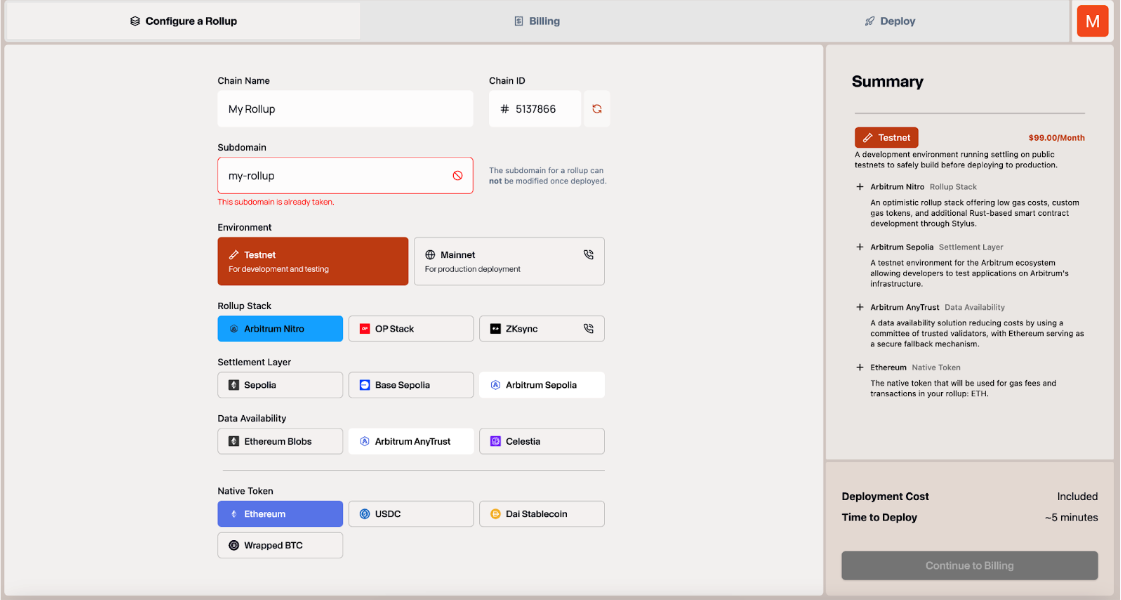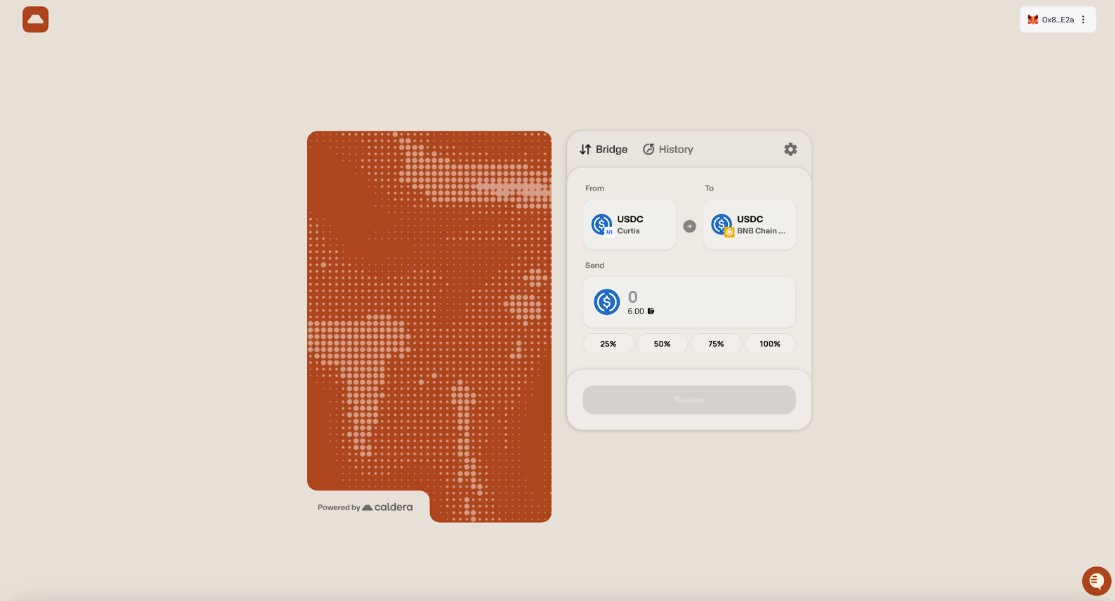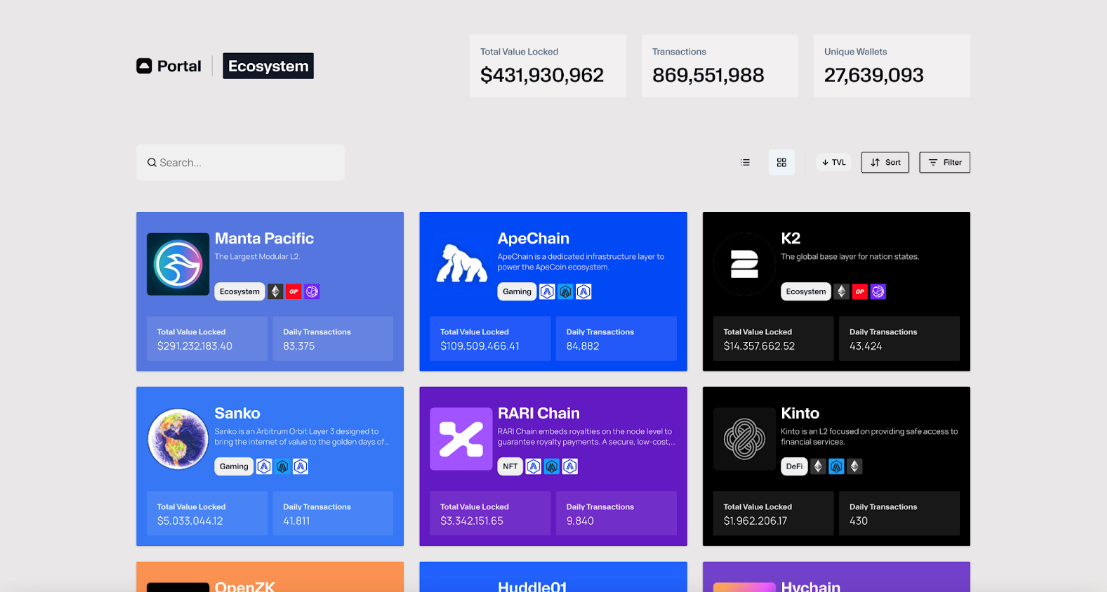Caldera is the internet of rollups - an ecosystem of modular, interconnected, and customizable chains.
$ERA utility will include the following:
Universal Cross-chain Gas: $ERA will be used as the payment mechanism for cross-chain transaction relays
Network governance: $ERA holders will be responsible for governing changes to the underlying protocol, including technical upgrades, fee mechanisms and DAO treasury spend
Staking: $ERA tokens will be used to secure the network. In the future, $ERA can be used as a staking token for sub-networks.
$ERA will also be used as a social coordination tool to further unite rollups to bootstrap their networks to achieve success in their earliest stages
The Metalayer is the foundation of Caldera’s protocol. Metalayer is Caldera’s cross-chain interoperability framework, enabling fast asset onboarding and cross-chain execution for rollups. Key features include:
Intents Engine: At the heart of the Metalayer is the powerful intents engine, which allows developers to define high-level intents for cross-chain execution. This engine simplifies complex operations, enabling fast asset onboarding and declarative execution across multiple chains.
Message Passing Protocol: Built on Hyperlane, the Metalayer’s message-passing protocol supports both 1-to-1 message passing and many-to-1 reads. This ensures reliable and secure communication between chains, facilitating a wide range of cross-chain applications.
Security and Composability: The Metalayer is designed with robust security protocols and composability in mind, allowing developers to build secure and flexible applications that can easily integrate with existing blockchain ecosystems.
The Caldera Ecosystem also includes the Rollup Engine, cloud-based infrastructure that allows anyone to launch a customizable blockchain in minutes. The Caldera Rollup engine now secures $400M+ in total value and has processed 850M+ transactions across 27M+ unique addresses. This growth underscores Caldera’s ability to handle real-world demand while maintaining reliability and efficiency.
The project has raised capital across four funding rounds. 32.075% of total total token supply is allocated to investors including Sequoia Capital, Dragonfly, and Founders Fund.
ERA’s total supply is one billion tokens (1,000,000,000 ERA). At launch, Caldera’s initial circulating supply will be 148,500,000 ERA.
Key metrics (as at July 16, 2025):
1. What is Caldera?
Project overview:
Caldera is The Internet of Rollups, a platform that’s making crypto faster, cheaper, and more interconnected than ever before. For crypto users, Caldera means no more high fees, slow transactions, or fragmented ecosystems. By allowing for horizontal scaling across a limitless number of chains, Caldera is the endgame for blockchain performance. Caldera’s capacity will never be saturated, and Caldera chains can adapt to every new use case that emerges in the blockchain space.
Project mission:
To create a world of infinite blockchains, connected seamlessly—where you can move assets, trade, and interact with apps across chains without friction.
Project value proposition
Caldera enables high-performance applications and blockchain ecosystems to build without limits, enabling crypto to reach mainstream adoption. Large-scale applications and big businesses desire their own blockchains that are powerful, customizable, inexpensive to use, and interconnected with the broader blockchain ecosystem. Caldera provides these blockchains.
Project Key Highlights:
Caldera was one of the first projects to offer production-ready rollups as a service
The project was the first rollup provider to support both Optimistic rollups and Zero-knowledge rollups
An early adopter of alt-DA: Caldera was the first team to run a mainnet rollup using data availability other than Ethereum, with the launch of its Celestia integration
Strong team: Constellation Labs, Inc, a core developer of Caldera, is comprised of 25 members across a variety of functions, including engineering, design, and go-to-market. Members of the team have previously worked at top blockchain companies like Uniswap, or large tech firms such as Google and Apple. Additionally, Caldera has expanded their team via M&A, with the acquisition of Hook, an NFT options protocol and Caldera ecosystem partner, in the fall of 2024.
Existing Products:

Caldera Rollup Creation Dashboard Caldera combines two products: the rollup engine, enabling any amount of performant new chains to be created quickly, and the metalayer, an all-purpose full-stack interoperability solution that makes it possible to interact across chains.
Caldera targets the Ethereum rollup ecosystem, which is rapidly growing but highly fragmented. As of April 2025:
Over 125 Layer 2s exist, with hundreds more around the corner, including ones for large institutions. Caldera’s solution will also eat into the general “enterprise blockchain” market, which has been valued as a several-billion dollar opportunity.
Caldera already powers ~25% of Ethereum rollups, with 100+ chains, 30 live mainnets, and over $400M in TVL.
Caldera’s metalayer will bring interoperability solutions into the mix, which is already a multi-billion dollar opportunity as evidenced by the growth of projects like LayerZero, Wormhole, and others.

Caldera Metalayer Bridge Interface Current metrics include:
Total unique wallets: 27.6M
Daily unique users (by IP/network usage): ~250k
Caldera Catalyst Campaign: 5+M MAUs
Stats can be found at portal.caldera.xyz, which aggregates statistics across the entire network of Caldera chains. From that site, each chain’s individual explorer can be accessed, which provides chain-level analytics.
Caldera has a diverse user base across its ecosystem, with analysis of user traffic showing the following top countries: USA, India, Indonesia, Vietnam, Japan, Germany, Nigeria, Russia, Hong Kong, Ukraine

The Caldera Ecosystem Portal
2. Technical Infrastructure:
The Rollup Engine
A cloud orchestration system that is specifically designed for layer-two blockchain systems
The rollup engine offers high-availability sequencer and RPC nodes, and provides auxiliary services in addition to the chain itself, such as data indexers and block explorers
The Rollup Engine also makes it easier for technology partners to offer their solutions through Caldera, through the creation of modules that projects can choose while creating their chain.
The Metalayer: Caldera’s native connectivity and interoperability solution
Intents Engine: At the core of the Metalayer is the intents engine, which allows developers to define high-level intents for cross-chain execution. This engine simplifies complex operations, enabling fast asset onboarding and declarative execution across multiple chains.
Message Passing Protocol: Metalayer's message-passing protocol supports sending messages across a variety of chains. This ensures reliable and secure communication between chains, facilitating a wide range of cross-chain applications.
Security and Composability: The Metalayer is designed with robust security protocols and composability in mind, allowing developers to build secure and flexible applications that can easily integrate with existing blockchain ecosystems.
3. Token sales and economics:
Token Distribution:
Token Release Schedule:
4. Risk Analysis:
Initial Circulating Retail:Institution Ratio:
Airdrop Cluster Analysis:
Initial TGE Main Bucket On-chain Wallets Addresses:
5. Roadmap and Updates
Link to original whitepaper: https://docs.google.com/document/d/1eonRqRbuxcAseUf8CyVt5XKbIKMb5K9ryLU6KMKoHT8/edit?usp=sharing
Link to current whitepaper: https://docs.google.com/document/d/1eonRqRbuxcAseUf8CyVt5XKbIKMb5K9ryLU6KMKoHT8/edit?usp=sharing
Past Milestones
Constellation Labs (dba Caldera) Founded: March 2022
Completion of Constellation Labs pre-seed (lead by Sequoia Capital) round: March 2022
Completion of Constellation Labs seed (lead by Dragonfly) round: March 2023
Support for OP stack in the rollup engine: Q1 2023
Caldera becomes the first project to support the Arbitrum Orbit stack: April 2023
First mainnet Caldera chain: May 2023
Caldera becomes the first project to launch a mainnet chain using Celestia DA (Manta Pacific): Sept 2023
Caldera hits 10 mainnet chains in its ecosystem: June 2024
Constellation Labs Series A (Lead by Founders Fund): July 2024
Caldera becomes the first rollup platform to run a ZK rollup (ZK Stack): Oct 2024
Caldera hits 30 mainnet chains: Q4 2024
Caldera metalayer and catalyst launch: Q2 2025
Future roadmap
Phase 1: Metalayer Mainnet & Ecosystem Bootstrapping (Q3 2025)
Metalayer General Availability: Metalayer leaves private access and moves towards general availability to the oublic
Caldera Token Utility: Introduce Caldera token as gas fees within the Metalayer.
Points Program: Incentivize adoption and bootstrap volume through Metalayer Mainnet.
Fiat & Exchange On-Ramping: Enable fiat on-ramps and exchange integrations to onboard users via metalayer integration
Alt-VM Support: Expand support for alternative virtual machines (Solana, Hyperliquid, etc).
Phase 2: Expanding Rollup & Liquidity Capabilities
Liquidity Infrastructure:
Deploy liquidity pools for users to provide liquidity for solver rebalancing.
Rollup Support Expansion:
Enable additional rollup stacks (e.g., based rollups, zk rollups).
Caldera Portal Launch:
Develop the Caldera Portal as a hub for end users.
Enable customers to run quests to attract users and liquidity to their rollups.
Phase 3: Token Mechanics & Incentives
Token Emissions:
Points program for incentivized bridging (users or app-level incentives).
Token emissions for deposits into relay pools.
Rewards for solvers and participants in solver-based liquidity mechanisms.
Token Sinks:
Metalayer fees paid in Caldera tokens, with potential token burns.
Introduce a native token for settlement and stablecoin-related use cases.
Staked tokens as a requirement for access to shared liquidity and orderflow.
Phase 4: Decentralization & Staking Infrastructure
Decentralized Metalayer Relaying & Validation: Move towards a more trust-minimized Metalayer.
Decentralized Rollup Validation: Distribute validation responsibilities across independent actors.
Decentralized Rollup Sequencing: Implement mechanisms to decentralize sequencing for rollups.
Staking Mechanisms:
Introduce staking for rollup native tokens.
Require token staking to access shared liquidity in relay pools.
Implement staking models for cheaper bridging and orderflow access (e.g., stake ERA, receive intents, slash for frontrunning).
Commercial and Business Development Progress:
Key partnerships in place:
Top rollup partners powered by Some notable ones include Apechain, Manta Pacific, XPLA, Zerion, B3, and more.
Partnership with top teams in modularity, including Espresso, EigenCloud, and Celestia
Partnerships with Optimism, Arbitrum, and ZKSync to offer rollup stack support
Caldera has also partnered with 50+ infrastructure providers to expand its solution set, from data availability, to oracles, to bridges, and more.
6. Community
Discord: https://discord.gg/caldera
Twitter: https://twitter.com/Calderaxyz
Telegram: https://t.me/s/calderaofficial
7. Appendix:
Metalayer Showcase Video: https://drive.google.com/file/d/1GBjvgNzXe93Fmbauc1pq55lrNAIDV-xh/view?usp=sharing
Rollup Engine Showcase Video: https://drive.google.com/file/d/1XA1I15VJ7PfX_xO9OVuZ7PglS0uJjCk7/view?usp=sharing
